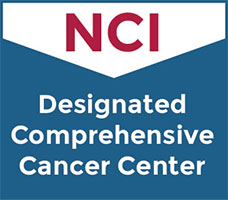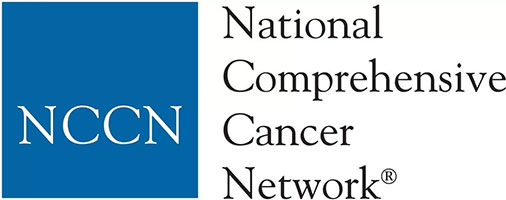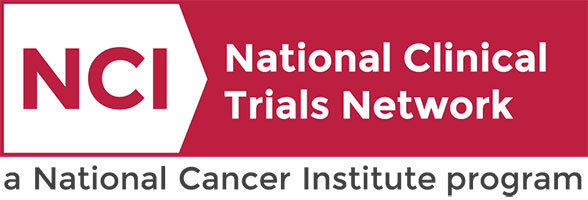Skip to main content
Retinoblastoma
- Retinoblastoma is a disease in which malignant (cancer) cells form in the tissues of the retina.
- Children with a family history of retinoblastoma should have eye exams to check for retinoblastoma.
- Retinoblastoma occurs in heritable and nonheritable forms.
- A child who has heritable retinoblastoma has an increased risk of trilateral retinoblastoma and other cancers.
- Genetic testing can determine whether a child has the heritable or nonheritable form of retinoblastoma.
- Signs and symptoms of retinoblastoma include "white pupil" and eyes that appear to be looking in different directions (crossed eyes).
- Tests that examine the retina are used to diagnose retinoblastoma.
- Certain factors affect prognosis (chance of recovery) and treatment options.
Neuroblastoma
- Neuroblastoma is a disease in which malignant (cancer) cells form in neuroblasts (immature nerve tissue) in the adrenal glands, neck, chest, or spinal cord.
- Neuroblastoma is sometimes caused by a gene mutation (change) passed from the parent to the child.
- Signs and symptoms of neuroblastoma include a lump in the abdomen, neck, or chest or bone pain.
- Tests that examine many different body tissues and fluids are used to diagnose neuroblastoma.
- A biopsy is done to diagnose neuroblastoma.
- Certain factors affect prognosis (chance of recovery) and treatment options.
Non-Hodgkin Lymphoma
- Childhood non-Hodgkin lymphoma is a disease in which malignant (cancer) cells form in the lymph system, which is a part of the body's immune system.
- There are three major types of childhood non-Hodgkin lymphoma.
- Aggressive mature B-cell non-Hodgkin lymphoma
- Lymphoblastic lymphoma
- Anaplastic large cell lymphoma
- Some types of non-Hodgkin lymphoma are rare in children.
- Having a weakened immune system increases the risk of NHL in children.
- Signs of childhood non-Hodgkin lymphoma include breathing problems and swollen lymph nodes.
- Tests that examine the body and lymph system are used to diagnose childhood non-Hodgkin lymphoma.
- A biopsy is done to diagnose childhood non-Hodgkin lymphoma.
- Certain factors affect prognosis (chance of recovery) and treatment options.
Hodgkin Lymphoma
- Childhood Hodgkin lymphoma is a disease in which malignant (cancer) cells form in the lymph system.
- The two main types of childhood Hodgkin lymphoma are classic and nodular lymphocyte-predominant.
- Epstein-Barr virus infection and a family history of Hodgkin lymphoma can increase the risk of childhood Hodgkin lymphoma.
- Signs of childhood Hodgkin lymphoma include swollen lymph nodes, fever, drenching night sweats, and weight loss.
- Tests that examine the lymph system and other parts of the body are used to diagnose and stage childhood Hodgkin lymphoma.
- Certain factors affect prognosis (chance of recovery) and treatment options.
Liver Cancer
- Childhood liver cancer is a disease in which malignant (cancer) cells form in the tissues of the liver.
- There are different types of childhood liver cancer.
- Certain diseases and conditions can increase the risk of childhood liver cancer.
- Signs and symptoms of childhood liver cancer include a lump or pain in the abdomen.
- Tests that examine the liver and the blood are used to diagnose childhood liver cancer and find out whether the cancer has spread.
- Certain factors affect prognosis (chance of recovery) and treatment options.
Childhood Brain and Spinal Cord Tumors Treatment Overview
General Information About Childhood Brain and Spinal Cord Tumors
Acute Myeloid Leukemia/Other Myeloid Malignancies - Childhood
- Childhood acute myeloid leukemia (AML) is a type of cancer in which the bone marrow makes a large number of abnormal blood cells.
- Leukemia and other diseases of the blood and bone marrow may affect red blood cells, white blood cells, and platelets.
- Other myeloid diseases can affect the blood and bone marrow.
- Transient abnormal myelopoiesis (TAM)
- Acute promyelocytic leukemia (APL)
- Juvenile myelomonocytic leukemia (JMML)
- Chronic myelogenous leukemia (CML)
- Myelodysplastic syndromes (MDS)
- AML or MDS may occur after treatment with certain chemotherapy drugs and/or radiation therapy.
- The risk factors for childhood acute myeloid leukemia and other myeloid malignancies are similar.
- Signs and symptoms of childhood acute myeloid leukemia and other myeloid malignancies include fever, feeling tired, and easy bleeding or bruising.
- Tests that examine the blood and bone marrow are used to diagnose and find any spread of childhood acute myeloid leukemia and other myeloid malignancies.
- Certain factors affect prognosis (chance of recovery) and treatment options.
Childhood Acute Lymphoblastic Leukemia
What is childhood acute lymphoblastic leukemia?
Vulvar Cancer
- Vulvar cancer is a rare disease in which malignant (cancer) cells form in the tissues of the vulva.
- Having vulvar intraepithelial neoplasia or HPV infection can increase the risk of vulvar cancer.
- Signs of vulvar cancer include bleeding or itching in the vulvar area.
- Tests that examine the vulva are used to diagnose vulvar cancer.
- Certain factors affect prognosis (chance of recovery) and treatment options.
Vaginal Cancer
- Vaginal cancer is a disease in which malignant (cancer) cells form in the vagina.
- Older age and having an HPV infection are risk factors for vaginal cancer.
- Signs and symptoms of vaginal cancer include pain or abnormal vaginal bleeding.
- Tests that examine the vagina and other organs in the pelvis are used to diagnose vaginal cancer.
- Certain factors affect prognosis (chance of recovery) and treatment options.
Subscribe to


